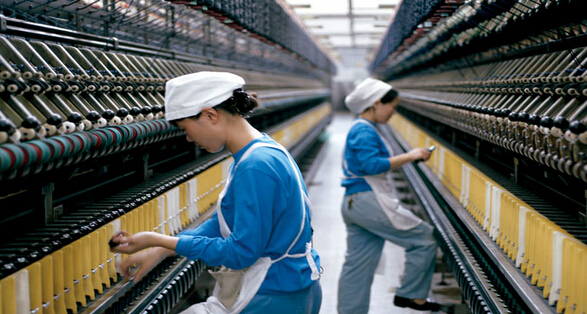פּלאַן איז צוגעגרייט פֿאַר שאפן וואָווען פאַבריקס. פּלאַן איז געטאן אויף פּאַפּיר. א גאַנץ פֿאַר וואָווען פאַבריקס זאָל צונויפשטעלנ פון וויוו פּלאַן, דראַפטינג פּלאַן און ליפטינג פּלאַן
1.וויוו פּלאַן: וויוו פּלאַן נעמט די ינטערלאַסינג פון די ענדס און פּיקס אין באטראכט. עס כּולל אַפּס און דאַונז פון יעדער יאַרן אין שטאָף און די נומער פון ענדס און פּיקס פון אַ פּלאַן יוטאַלייזד. עס איז ריפּיטיד פֿאַר די גאַנץ פּלאַן.
2.דראַפטינג פּלאַן: דראַפטינג פּלאַן ווייזט די נומער פון העאַלדעד שאַפץ וואָס זענען געניצט און דער סדר אין וואָס די וואָרפּ ענדס זענען טרעדאַד דורך כילד אויג פון די כילד שאַפץ.
3.ליפטינג פּלאַן: ליפטינג פּלאַן אויך באקאנט ווי פּעג פּלאַן דיפיינז די סאַלעקשאַנז פון כילד שאַפץ צו זיין מחיה אָדער לאָוערד אויף יעדער סאַקסעסיוו ינסערשאַן פון ביינדל.
עטלעכע סיבות זאָל זיין גענומען אין באטראכט בעשאַס דיזיינינג.
1.דענטינג פּלאַן: דער פּראָצעס ינסערטינג וואָרפּ יאַרן כאָטש ראָר איז גערופן ווי דענטינג. דענטינג פּלאַן מוזן טרעפן די באדערפענישן אויף אָרדערס.
2.ביניען: אין די פּראָדוצירן פון שטאָף דורך וויווינג אויף אַ וועבשטול, די טעקניקס ינטערלאַסינג צוויי סעריע פון פֿעדעם אין די רעכט אַנגלעס צו יעדער אנדערע זענען גערופן ווי ביניען.
3.געוועב: די טערן געוועב סיגנאַפייז די אַלגעמיינע קוואַליטעט פון אַ שטאָף, דעוועלאָפּעד דורך די ינטערפּלאַסעמענט פון יאַרן געניצט. וואָג, פאַרנעם און האַנט געפיל זענען אויך אויסגעדריקט דורך די טערמין פון געוועב. מאַטעריאַלס, ציילן פון יאַרן און קאָרעוו געדיכטקייַט פון פֿעדעם זענען זייַן הויפּט סיבות.
אזוי נאָר ווייַטערדיק די פּלאַן פּלאַן פון די שטאָף קענען וויסן וועגן דעם וואָווען שטאָף. אין דער מאדערנער צייט, פאַרשידן טייפּס פון קאָמפּלעקס פּלאַן זענען געשאפן. פאַרשידענע מין פון וואָווען מאשינען קענען זיין געניצט פֿאַר פּלאַן, אַרייַנגערעכנט דזשאַקקוואַרד וועבשטול, דאָבבי וועבשטול, וואַסער שפּריץ וועבשטול אָדער לופט שפּריץ וועבשטול.
אומרעכט אָפּקלייַב לון וועט שעדיקן צו די וואָווען שטאָף.
